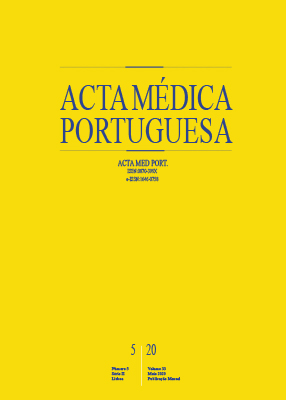A Rare Case of Spontaneous Intrauterine Skull Fracture
DOI:
https://doi.org/10.20344/amp.11565Keywords:
Hypocalcemia, Infant, Newborn, Skull Fractures, Torticollis/congenital, Vitamin D DeficiencyAbstract
Skull fractures are rare in newborns and normally caused by maternal abdominal trauma or complicated deliveries. However, in rare cases, these fractures are found in neonates born after an uneventful pregnancy and delivery. We report a case of a primigravida who underwent cesarean delivery due to failure of descent and malpositioning of the fetal head. After birth, a right temporoparietal fracture and congenital muscular torticollis were diagnosed. The newborn’s blood tests showed hypocalcemia and relative hypoparathyroidism. Both mother and newborn presented low vitamin D levels. Serial imaging control showed gradual resolution of the lesions, with the newborn being discharged at the 10th day of life with vitamin D supplementation. This is an interesting case because the combination of three conditions - maternal and fetal hypovitaminosis D, congenital torticollis and malposition of the cephalic pole during labor – may have synergistically contributed to a spontaneous intrauterine skull fracture.
Downloads
Downloads
Published
How to Cite
Issue
Section
License
All the articles published in the AMP are open access and comply with the requirements of funding agencies or academic institutions. The AMP is governed by the terms of the Creative Commons ‘Attribution – Non-Commercial Use - (CC-BY-NC)’ license, regarding the use by third parties.
It is the author’s responsibility to obtain approval for the reproduction of figures, tables, etc. from other publications.
Upon acceptance of an article for publication, the authors will be asked to complete the ICMJE “Copyright Liability and Copyright Sharing Statement “(http://www.actamedicaportuguesa.com/info/AMP-NormasPublicacao.pdf) and the “Declaration of Potential Conflicts of Interest” (http:// www.icmje.org/conflicts-of-interest). An e-mail will be sent to the corresponding author to acknowledge receipt of the manuscript.
After publication, the authors are authorised to make their articles available in repositories of their institutions of origin, as long as they always mention where they were published and according to the Creative Commons license.









